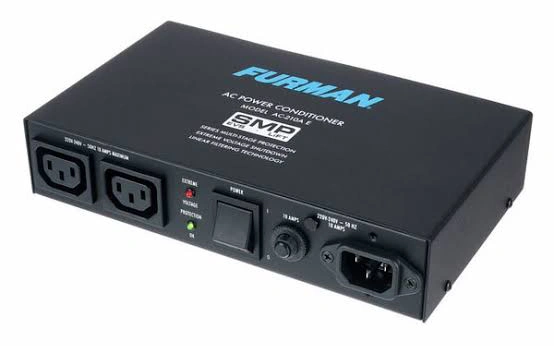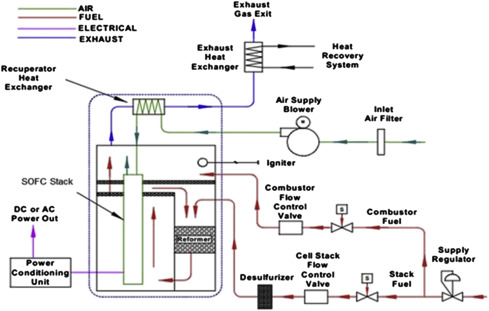Are you looking to protect your expensive electronics? For starters, a Surge protector can be a good option, but power conditioners are a better choice to protect your electronic devices.
Power conditioners offer valuable protection against voltage fluctuations, noise, and other issues affecting the performance of the device. With advancements in technology, this solution is going to be more crucial than ever.
Read this blog to learn crucial information about power conditioners, including their components, working, key benefits, applications, potential future, and more.
What are Power Conditioners?

Power conditioners are a type of voltage regulator used to protect sensitive devices, like lab equipment, computers, home theaters, speakers, and so on. It protects them from voltage fluctuations and random power surges.
It can also be used to remove radio and electromagnetic interference from the AC line. This allows audio/video devices like radios, speakers, and amplifiers to perform at their peak. Always look for suppliers like acumentrics.com/applications/power-conditioning/ to learn about the right device for your needs.
Power suppliers try to maintain a nominal voltage range (e.g., 114-126V in North America). Your device can shut down, malfunction, or get damaged when the power supply to a device goes out of this range. These devices offer automatic voltage regulation to maintain the nominal voltage range.
Components of a Power Conditioner
A typical conditioner may consist of the following components:
- Surge suppressors
- Isolation transformers
- Input filters (capacitors and inductors)
- Voltage regulators
- RF interference filters
Depending on the need, it can also have some additional filtering circuits to provide extra cushion. A passive conditioner can work with the help of capacitors and inductors only. However, an active conditioner uses electric circuits to offer more control over the power supply.
It is important to choose the right device with a sufficient rating to manage the power imbalance of your connected device.
How Power Conditioners Work?

These voltage regulators act as a buffer between the power source and your device. In the process, it manages the fluctuations and the radio and electromagnetic interference.
These devices use various mechanisms to maintain the nominal range of power supply to electronic devices. Voltage regulation, noise filtering, harmonic distortion mitigation, and surge protection are some of the main mechanisms included in the process.
By utilizing advanced technologies, the conditioners create a stable environment for your essential electronic devices. Furthermore, more sophisticated models may also integrate smart technology to effectively monitor power quality in real time.
Key Benefits of Using Power Conditioners
Power conditioning offers several key advantages to your crucial electronic devices like computers, medical equipment, communication devices, industrial machinery, and others. Let’s take a look at some of the major benefits:
- It protects your device from voltage surges that can lead to damage to your system or degrade its performance. It improves the overall lifespan of electronic equipment.
- It prevents data loss caused by various power supply disturbances.
- It reduces the wear and tear of your device that can be caused due to overheating.
- It helps remove the noise and distortion in electrical lines caused by the radio and TV stations.
Additionally, it saves a lot of energy and money by reducing downtime and power losses.
Applications of Power Conditioners
These voltage conditioners can be used in a wide variety of industries, in which power stability plays a key role. Let’s take a look at some of the common applications of power conditioners.
- Medical Sector: It can be used to safeguard expensive surgical and diagnostic machines and equipment. The healthcare industry needs an uninterrupted supply of power to save valuable lives.
- Lab Equipment: It is a useful device to protect various lab equipment and sensitive devices in various research and development facilities.
- Entertainment Industry: It is a great tool to maintain the optimal performance of various audio/video devices. Thus, it is a great addition to any company working in the field of entertainment.
- Manufacturing Sector: These industries often rely on stable and clean power supply to effectively run automation and robotics. A strong conditioner can help them overcome the irregularities in daily operations.
Power conditioners are a versatile device that plays a key role in maintaining smooth operations across various sectors.
The Future of Power Conditioning Technology
The demand for a stable and reliable power supply is going to increase in the future because of the ongoing development in almost every sector. As a result, power conditioning and transformers sectors are witnessing a major transformation.
Many new and innovative technologies are already in the pipeline to deliver advanced conditioning solutions. Digital twin technology, solid-state transformers, condition monitoring, and predictive support are a few of the emerging examples.
Overall, the future of the industry looks great. If you understand the technology behind power conditioners, you should be bullish on the future developments of the industry.




